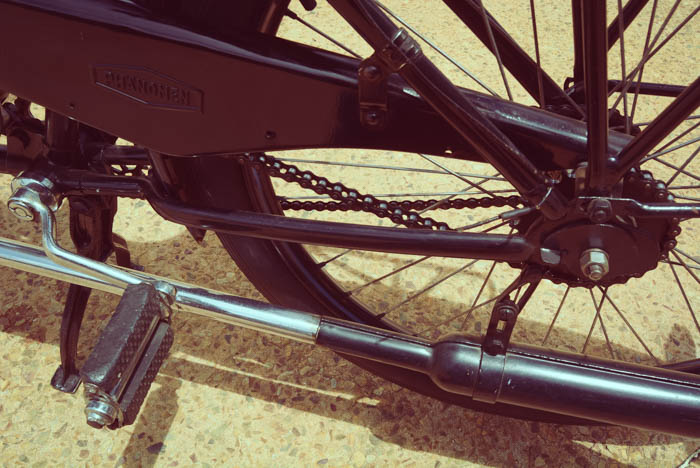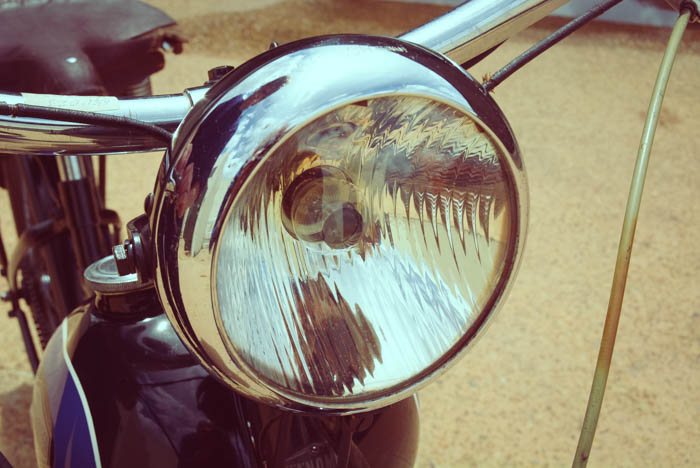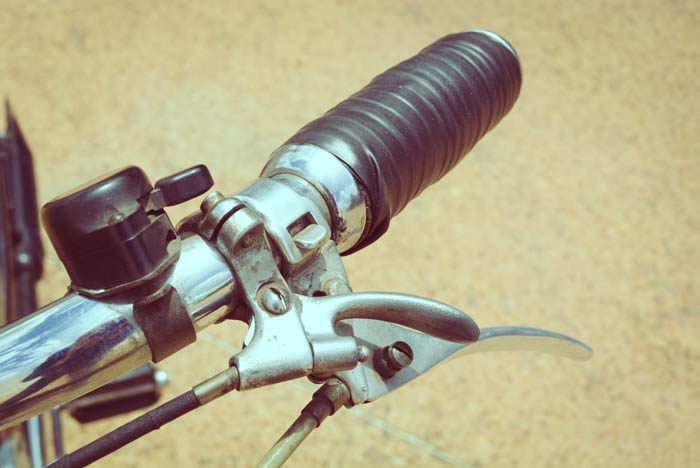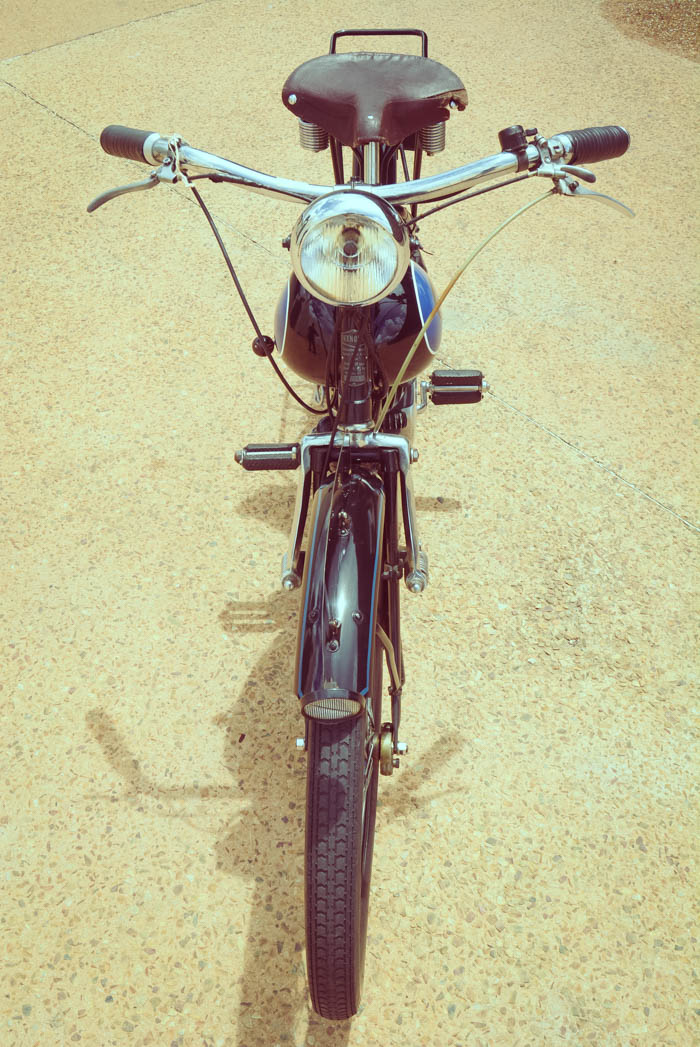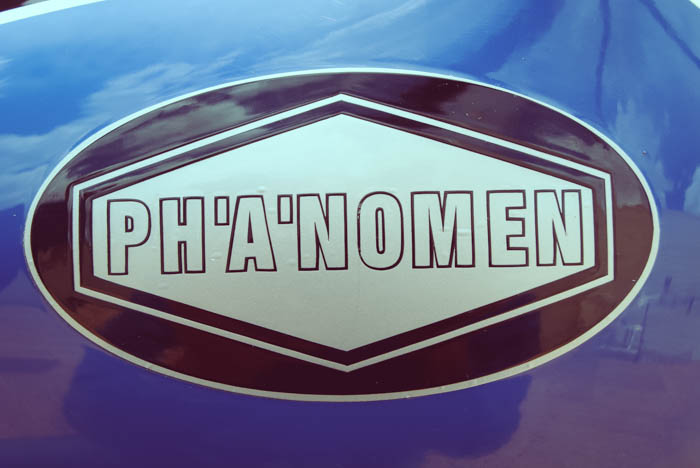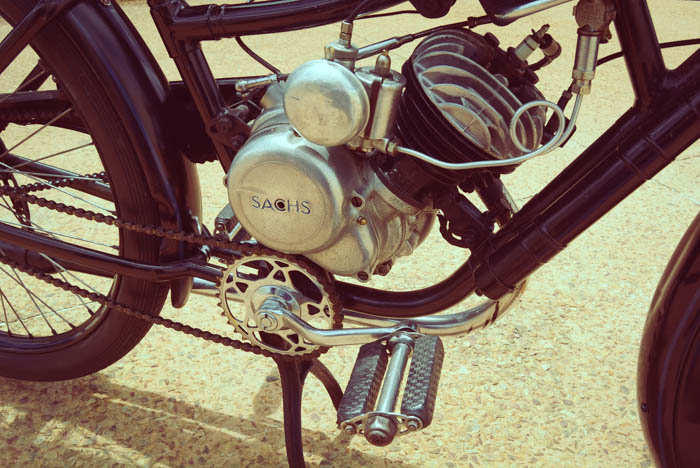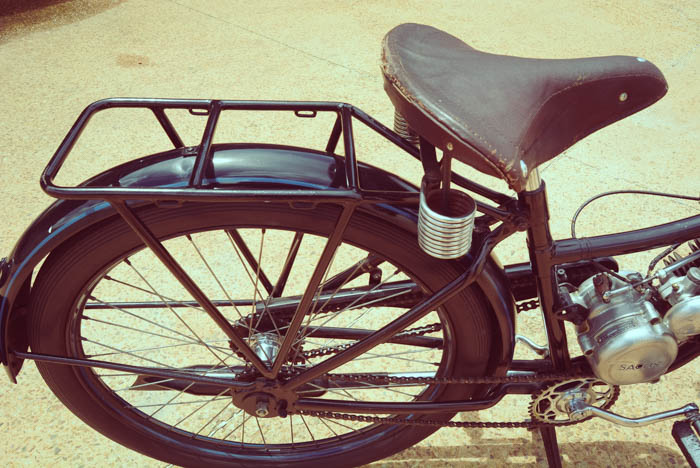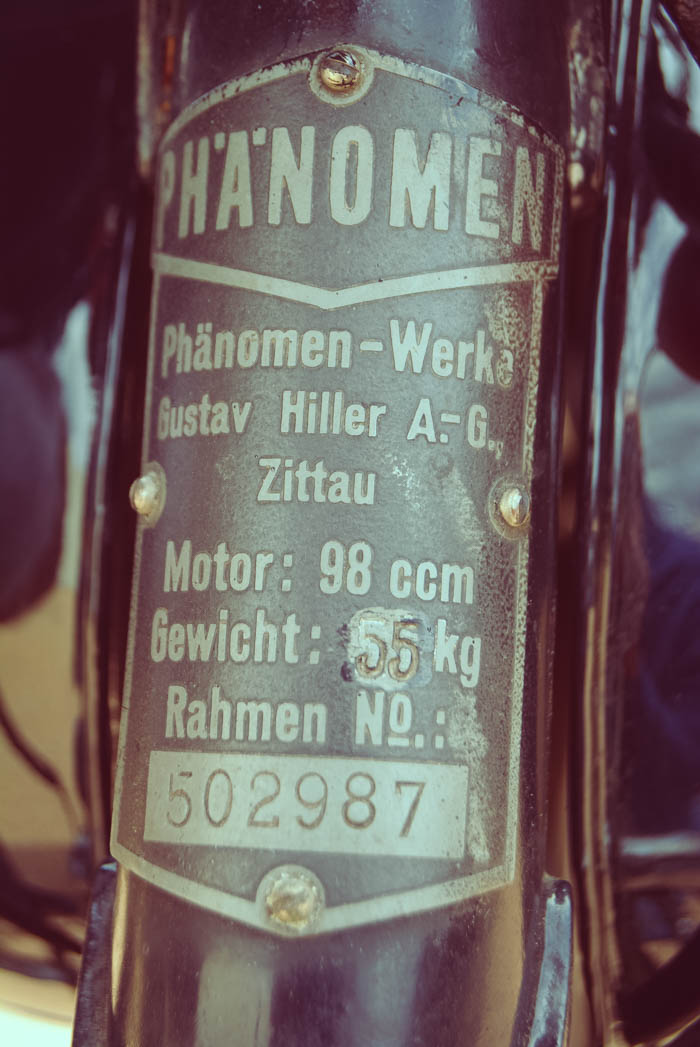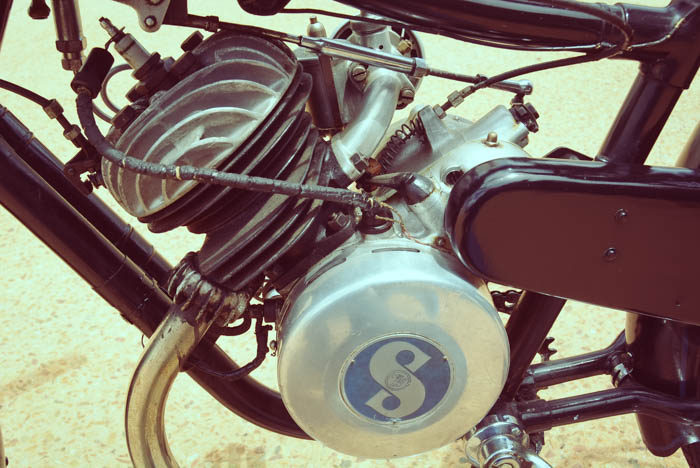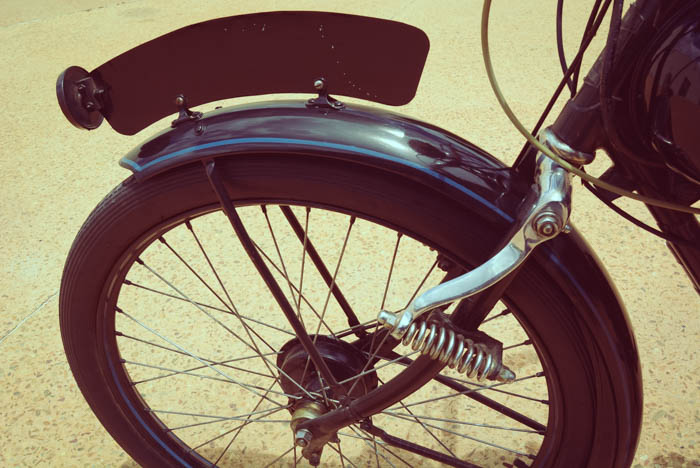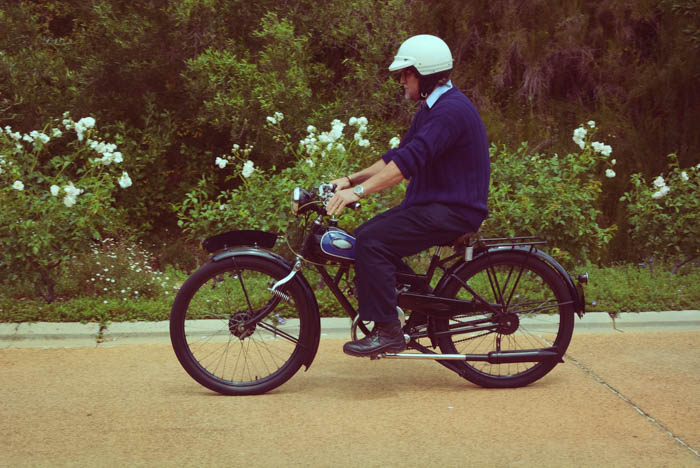
23 Nov On yer bike: Phanomen
FMM curator Wayne Harley is a self-confessed motorcycle enthusiast and this month he introduces Bob…
On a trip to England, Karl Gustav Hiller obtained an exclusive license to import and build Rover Safety Bicycles. He became a shareholder and later owner of the Zittau machine factory Müller & Preußger, which refined Rover bicycles and began to distribute them under the name Phänomen-Rover in 1894. In 1900 the company began to produce Phänomen motorcycles, initially with Fafnir engines, but from 1903 onwards single-cylinder four-stroke engines of Phänomen design were used. This change of engine necessitated a strengthening of the bike frame and a change to bigger wheels. Permanent improvements led to the development of a two-cylinder engine. Hiller also started producing cars and trucks in 1910; however that’s a story for another day…
The exact vintage of FMM’s little 100 cm3 BOB 100 is rather difficult to determine, but we do know that it is based on its older sibling, the M28. It appears as though the BOB 100 was produced from 1937 and was available to around 1941. It is a remarkably well finished-off little moped and customers had the wide choice of two colours, grey and black, but for five Reichsmarks more you could get another colour. The BOB 100 came standard with a Sachs 98 cm3 motor delivering 2,5 hp (1,7 kW) that was able to whizz a big rider along at 49 km/h, while a lighter person could attain over 50 km/h easily… However, this only applied to the flat, open roads of Northern Europe on a windless day, as the BOB has only a two-speed transmission. When faced with a steep incline, let alone the Alps, you had to be prepared to stick it into low gear and lift your butt out of the saddle to help the little Sachs motor get you up the hill.
With its bicycle-type pedals and 26-inch wheels you can’t mistake its pushbike heritage, and the riding position is identical to peddling a standard bicycle. As for the brakes, what can I say except that they are there so that the salesman had something to charge you for on the extras list. They really are not good. But if you keep in mind that bugs are more likely to fly into the back of your helmet, then it’s not really an issue…
With its seven-litre fuel tank and a claimed consumption of 1,9 litres/100 km, this motorcycle gives excellent fuel consumption and a range of over 370 kilometres, although you might die of old age if you ever attempted a journey of that length. But on a more serious note, this little bike represents a very important part of motorcycling history and recalls something which is often forgotten with our modern biking lifestyle, namely that motorcycles and mopeds are, and always will be, one of the most cost-effective and efficient ways to commute.
